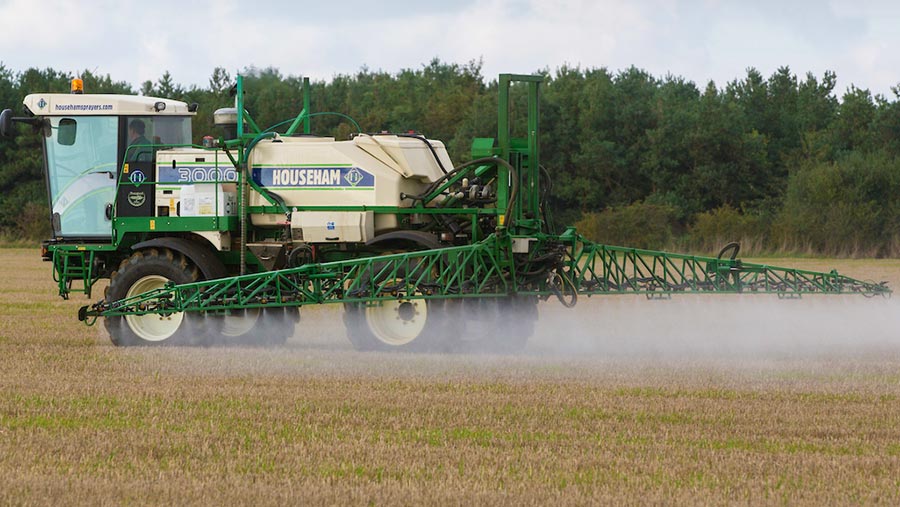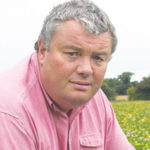Crop Watch: Time ripe for stale seed-bed blackgrass control
 © Tim Scrivener
© Tim Scrivener Regional variation in oilseed rape establishment is in the spotlight this week, with conditions in the South close to optimum so far, says Iain Richards, who advises holding off on blackgrass treatment for as long as possible to reduce pressure on propyzamide.
However, conditions further west have been more challenging, with Stephen Harrison saying growers have had to tackle almost every pest and weed in the book on the back of poor emergence.
There should be less delay in blackgrass treatment ahead of cereal establishment, says Sean Sparling, who advises growers to get at least two good hits on the grassweed before drilling.
See also: Farmers’ verdicts on 2017 wheat disease strategies
There is brighter news for northern potato growers though, with Andy Goulding reporting excellent yield and quality despite recent high blight pressure.
West: Stephen Harrison
AICC/Southwest Agronomy (Avon)
 Newly established oilseed rape has required so much attention it has seemed more like May in terms of workload rather than early autumn.
Newly established oilseed rape has required so much attention it has seemed more like May in terms of workload rather than early autumn.
Flea beetles, slugs, blackgrass, a few sawflies and now phoma is creeping in – all we need are a few pigeons for a full house.
Early dry seed-beds did not help and many seeds went in rather deep, meaning a lot of emergence was very patchy. We have steered clear of pre-emergence treatments except for clomazone where cleavers are a worry.
Cereal drilling has been held back by some heavy showers, which has been no bad thing as it looks as if we are going to get the two obligatory blackgrass flushes before drilling.
Variety review
The prospect of no glyphosate fills me with apprehension and we are not even in a horrendous blackgrass area. Please keep campaigning.
Varieties are little changed on last season. Orwell will take a larger share of the barley area, although Cassia and Tower are still popular. Bazooka dominates the six rows. We are looking at Shabras for our limited second wheat area.
A significant area of our wheat follows maize, which we expect to start harvesting over the next week.
Maize is proving a great break crop. As it is sown in late spring it is an ideal blackgrass break and relatively late harvesting pushes back the wheat drilling date into October, which helps with disease management and grassweed control.
A lot of the maize is now grown on exclusively arable farms to sell to large dairy farms.
With the ridiculous loss of pesticides on greening crops we have had to rejig rotations, with increased reliance on hedgerows and margins. However, pulses will continue to be grown to keep rotations wide.
East: Sean Sparling
AICC/SAS Agronomy (Lincolnshire)
 Oilseed rape establishment has been relatively good, although once through the ground it seems to have stopped dead in its tracks thanks to wet feet and cooling soils.
Oilseed rape establishment has been relatively good, although once through the ground it seems to have stopped dead in its tracks thanks to wet feet and cooling soils.
Cabbage stem flea beetle activity has been more widespread and troublesome than in previous years, although what limited effect we are getting from pyrethroids does seem to be allowing the oilseed rape to grow just that little bit faster than they can damage it.
I have redrilled a little over 160ha as a result of cabbage stem flea beetle – the first time we have had to do so.
Slugs are also proving a challenge, with subsoiler and minimum tillage establishment techniques leaving us with unsurprisingly imperfect and untidy seed-beds in these wetter conditions.
Phoma alert
Disease levels remain very low, although in a five-leaf crop I did find my first phoma lesion. Therefore vigilance in all crops, especially in the smaller later-emerging ones, is strongly advised.
With more than 20 days of consecutive rain, conditions are now perfect for the appearance and rapid spread of both phoma and light leaf spot.
In cotyledon to two-leaf OSR, phoma can spread very rapidly from leaf to stem because it doesn’t have far to go. Therefore monitor closely and regularly and work to thresholds rather than blanket bombing at the first sign of infection.
First fields of winter wheat are being drilled on the Heath into non-blackgrass land, but apart from hiding the keys to the drilling tractor on a couple of farms, growers with blackgrass issues are once again being advised to hold their fire until at least 15-20 October.
Only start when at least two good blackgrass flushes of 500 heads/sq m have been taken care of with the only herbicide which reliably kills it – glyphosate.
On that note, if you haven’t already made some noise to your MP about how vital glyphosate is to the future of this industry, time is rapidly running out to have your opinion heard, so please do your bit – the vote on its future is imminent and we cannot afford to lose glyphosate through apathy.
South: Iain Richards
Agrii (Oxfordshire)

Iain Richards
Plenty of moisture with decent seed-beds, consolidation and fertiliser placement has meant very good oilseed rape establishment.
As a result, slugs have yet to cause us serious problems, despite the wetness. And the earlier-sown crops, at least, have grown away well from any flea beetle attack, reaching two or three true leaves in double-quick time.
We’re not out of the woods yet; especially with our later drillings, which are well behind and have to cope with much colder conditions, so we are keeping our pest control guard firmly up on both fronts here.
Volunteer control is also a particular priority across our oilseed rape this season. There were plenty of spring barley heads that couldn’t be picked up at harvest and we know how damaging barley volunteers can be.
We’re holding back on any blackgrass treatment in the crop for as long as we dare to reduce the pressure on using propyzamide too early.
Mega blackgrass flushes
However, we have already used glyphosate on some incredible flushes of blackgrass in our pre-cereal stubbles and, having tickled them up, should be able to deal the seed bank another timely blow ahead of most of our autumn sowing.
Wheat drilling – on low-blackgrass-risk ground only – is imminent now. We’re using slower-developing varieties such as Crusoe and Graham here and relying on Deter (clothianidin) to help us cope with big populations of slugs in rapeseed stubbles.
Ground conditions may be good – providing it stops raining – but it will be a few weeks before we begin drilling the fields with a higher blackgrass risk.
If the current much cooler conditions continue, though, we may be able to go in mid- rather than late October. By then we should have seen off the bulk of the early weed growth and soil temperatures should be ideal for the best pre- and peri-emergence efficacy.
This will certainly mean those with big acreages to drill can sleep a lot more soundly this time around.
North: Andy Goulding
CAS/Hutchinsons (Cheshire)

Andy Goulding
Deciphering seed rates to give a healthy plant population come spring is always an interesting and debated topic.
Calculating this percentage of survivors is difficult with the amount of variables we are working with. It is, however, a useful exercise to carry out in as many scenarios as possible, particularly for plants that cannot compensate for lack of numbers.
I have recommended seed dressings containing clothianidin insecticide as a good establishment aid with activity against slug hollowing, wireworm and BYDV vectors.
As we enter the peak drilling time for cereals, the persistency could hopefully take us into a period where aphid flight is no longer happening.
Not only is this approach more reliable and friendly to non-target species, but it can also reduce trafficking the soils when they are most vulnerable to structural damage.
Where opportunity will allow I am also going to be looking at sedaxane and its potential to mitigate the effects of rhizoctonia.
Superb spud quality
On the spud front, crops are coming into store with some of the best quality we’ve ever seen – and some yields to match.
The last of the crops being desiccated have borne the brunt of fierce blight pressure and any tissue not covered, no kickback, or delays in application has resulted in lesions appearing quickly.
With the new virulent “Green 37” strain the obvious choice for desiccation is cyazofamid or if you’re at the maximum number of application then fluopicolide.
There is still time for certain species of cover/catch/conditioning crops. The important thing is not to lose sight of what you want to achieve and select species accordingly to meet your goal.
It isn’t a silver bullet to a given problem, but an invaluable tool as a holistic approach to cropping and looking after our most valuable asset – soil.

